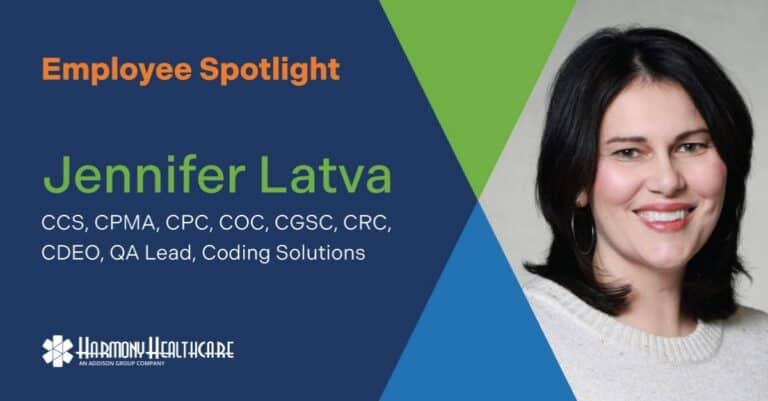Exploring Key Best Practices for Accountable Care Organizations

It’s been several years since accountable care organizations (ACOs) were added as a permanent part of Medicare due to the Affordable Care Act (ACA). As of January 2021, there are 477 Medicare ACOs that serve more than 10.7 million beneficiaries, with hundreds more commercial and Medicaid ACOs serving millions of additional patients.
Let’s take a look at ACOs and best practices for managing these organizations as part of the ever-evolving landscape of healthcare.
ACOs 101
ACOs are defined by the Centers for Medicare & Medicaid Services (CMS) as groups of doctors, hospitals, and other healthcare providers who come together voluntarily to give coordinated high-quality care to their Medicare patients. They are designed to coordinate patient care and focus on prevention while improving clinical outcomes, reducing medical errors and unnecessary duplicate services and decreasing the cost of healthcare.
The 3 core ACO principles are:
- provider-led organizations with a strong base of primary care that is accountable for quality and per capita costs
- payments linked to improvement in quality and reduced costs
- reliable and increasingly sophisticated measurement of performance, to support improvement and provide confidence care is improved, and cost savings occur
Though the accountable care organization program is the fastest growing in the history of Medicare, there is no standard ACO. Each model has a “nuanced funding structure and value metrics they report on, and contracts vary from group to group.” For example, some of them focus on specialists while others focus on delivering primary care.

Overcoming obstacles
Almost all ACOs face various challenges, including:
- a lack of connectivity and interoperability between disparate systems
- ongoing costs without a rapid ROI
- an unrestricted choice of providers for patients
- incomplete data management
- the absence of the proper technology infrastructure
- the inability of some EMRs to export data
However, they have the potential to increase interoperability and obtain data from multiple sources – even those out of network – by:
- gaining support of other providers and employees
- utilizing standardized data
- developing application programming interfaces (APIs)
- investing in an ACO operations system
When ACOs overcome these obstacles, they’re able to realize numerous benefits such as improved coordination of patient care, a reduced number of duplicate services, shared infrastructure and startup costs, streamlined chronic care management, and fewer administrative processes.
Other advantages consist of enhanced health information exchange, shared responsibility for meeting and reporting quality benchmarks, access to more data for enhanced population health management, increased patient satisfaction, decreased cost for preventative care, improved care transitions, shared financial risk, and increased data analytics capabilities.

Summarizing the payment structure
A key component of the ACO payment structure is financial risk, and Medicare offers several ACO programs, including the following:
- Medicare Shared Savings Program (cms.gov): for fee-for-service beneficiaries
- ACO Investment Model: for Medicare Shared Savings Program ACOs to test pre-paid savings in rural and underserved areas
- Advance Payment ACO Model: for certain eligible providers already in or interested in the Medicare Shared Savings Program
- Comprehensive ESRD Care Initiative: for beneficiaries receiving dialysis services
- Next Generation ACO Model: for ACOs experienced in managing care for populations of patients
- Pioneer ACO Model: for healthcare organizations and providers already experienced in coordinating care for patients across care settings
Recently, almost a dozen healthcare organizations requested that the Department of Health and Human Services (HHS) delay or revise mandated quality measure reporting for ACOs for the Medicare Shared Savings Program (MSSP). Changes to the program were published in the Final 2021 Medicare Physician Fee Schedule Rule. ACOs in MSSP are being asked to aggregate data from disparate electronic health records systems, which are not interoperable.
They’re also being required to report quality data on all patients, regardless of payer, raising issues with collecting data from non-ACO providers and on patients with no connection to the ACO.
Making recommendations for success
Recent research recommends ACOs follow best practices that allow them to “better leverage their health IT infrastructure and population health management programs to continue down the path to success.” It suggested this can be accomplished by:
- using population health management initiatives to target patients who are ill
- expanding home visit strategies to be more comprehensive
- putting health IT tools into action for care coordination
In taking a strategic approach to their mission of delivering high-quality care for lower costs, ACOs can carve a path to success to expanding access to care, building care teams for more coordinated care, emphasizing wellness, and using high-quality data to inform decisions.
Highly successful ACOs commonly focus on 3 best practices: achieving a high-value culture, configuring effective population health management programs, and implementing structures to ensure continuous performance improvement over time.

Healthcare industry recommendations for ACO best practices include:
Healthcare Financial Management Association (HFMA):
- conducting a readiness assessment
- designing an effective governance structure
- establishing a strong provider network and other strategic partnerships
- focusing on the culture shift: from volume to value
- establishing an effective funds-flow model
- engaging with external and community stakeholders
HHS Office of the Inspector General (OIG):
- working with physicians
- engaging beneficiaries to improve their own health
- managing beneficiaries with costly or complex care needs
- reducing avoidable hospitalizations and improving hospital care
- controlling costs and improving quality in skilled nursing and home healthcare
- addressing behavioral health needs and social determinants of health
- using technology to increase information sharing among providers
Healthcare Transformation Task Force (HCTTF):
- involving senior decision makers
- engaging physician and community practices
- expanding Clinical partnerships
- utilizing operational infrastructure for performance measurement
- tying performance to compensation and network contracts
- participating in shared learning opportunities

At Harmony Healthcare, we personalize support for some of the largest health systems in the nation, major academic health centers, hospitals, physician practices, and payers. Our world class team of non-clinical experts are primed to help your ACO see around the corners for a more successful tomorrow.






